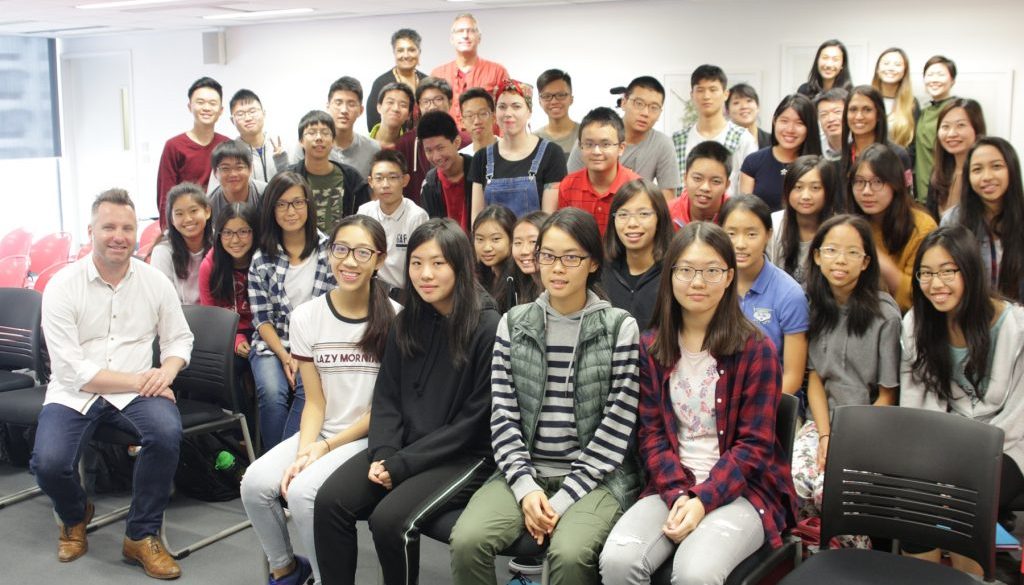Visiting Poet – Helen Mort

Helen Mort has achieved success at a relatively early stage in her career. She has won many prizes, including the Foyle Young Poets award and Manchester Young Writer Prize, while her first poetry collection Divison Street (2013) was shortlisted for the T.S. Elliot and Costa prizes. She has also been the youngest ever poet-in-residence at Dove Cottage (William Wordsworth’s actual house) for Wordsworth Trust, in England’s beautiful Lake District. She has also been the Poet Laureate for Derbyshire, and has been called one of “the brighest stars in the sparkling new constellation of young British poets” by none other than Carol Ann Duffy. While in Hong Kong, she came to Singapore International School to speak to our DP1 cohort on writing poetry and being a poet.
“Tell all the truth but tell it slant —” (1263). She begins with this quotation from Emily Dickinson as an illustration of what poetry means, a manner of telling truths or expressing one’s perspective of the world through different lenses. We learn how poetry can come from the most serious or whimisical of subject matters, and contextualises the readings of her poems in all manner of ways that speak of honesty and humbleness. From a self-depracating tribute to her last name Mort (which is French for ‘death’), to the long titular poem of her first poetry collection Division Street, the cover image of which is of an iconic image of confrontation between a miner and a policeman taken during the mining strikes that occurred in England during the eighties (see right). She highlights how the name Division Street had many meanings for both the poem and the collection, referring to the many political and personal conflicts that are spoken about in the book, as well as it being the name of a street in her hometown Sheffield; a sign of a connection towards landscapes and places that is evident in her poems. She also mentions how she came to write No Map Could Show Them (2016) by combining her passion for writing and mountaineering, and speaks of the close link between the stories she had read and the poems which had come out of it.
During the Q&A sessions, the DP1 students asked more practical questions on the writing process: Which was your favourite poem to write? How do you balance between the pressure to produce good writing because of fame and writing something that truly inspires you? How do you deal with different interpretations of your poems?In response, she describes the writing process and how she feels most inspired when running and how she comes up with lines that stick in her head, waiting to be written on a page. Despite her happiness at receiving recognition for her works, she sees herself as someone who loves writing poetry first rather than a famous poet, and when experiencing writer’s blocks, she tends to focus on side projects and wait for inspiration to enter, as was the case when writing her second poetry collection. As for people’s responses to her works, she says that there have been interpretations that she has been amazed by and had not thought of, while there have been others that have been entirely off track. She maintains that while poetry is personal to every reader and subject to individual interpretation, there are certain clues found within the poem that point to its meaning, and ignoring those clues would render the interpretation of the poem to be meaningless.
Through Helen Mort’s words, it is evident that poetry is very much an extension of the poet, as ideas are formed on their interactions and observations, as while as personal experiences that shape them and their writing. Through this fruitful session, the DP1 students, who have been studying The World’s Wife by Carol Ann Duffy, now have a chance to look at the genre from the writer’s perspective, and better understand how poems are constructed. This then would have a great influence in the analysis of future poems, and provide some insight in determining the authorial intent in every work of poetry that they come across.





